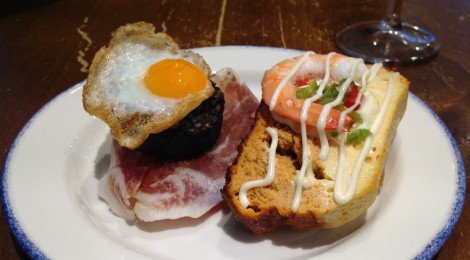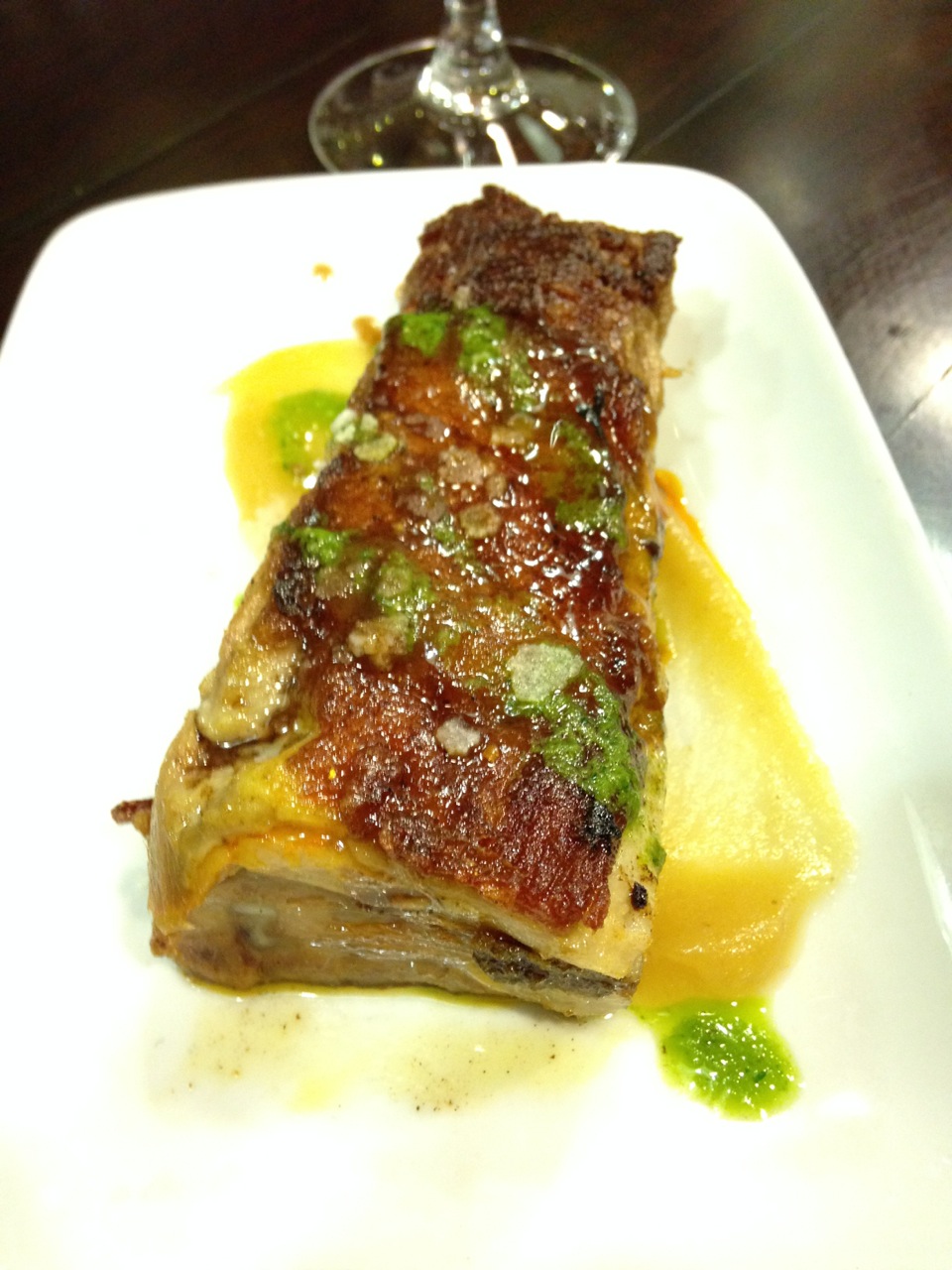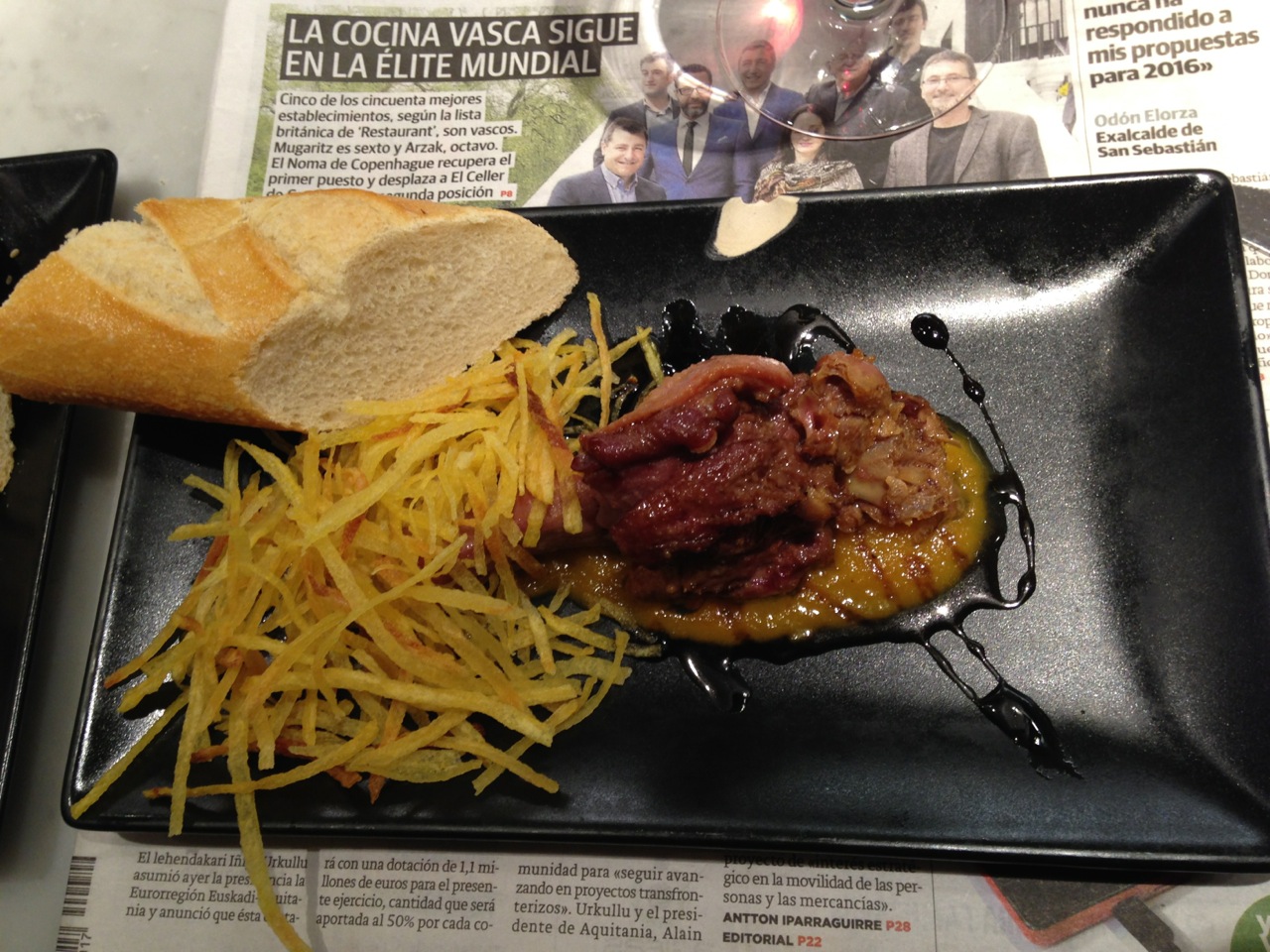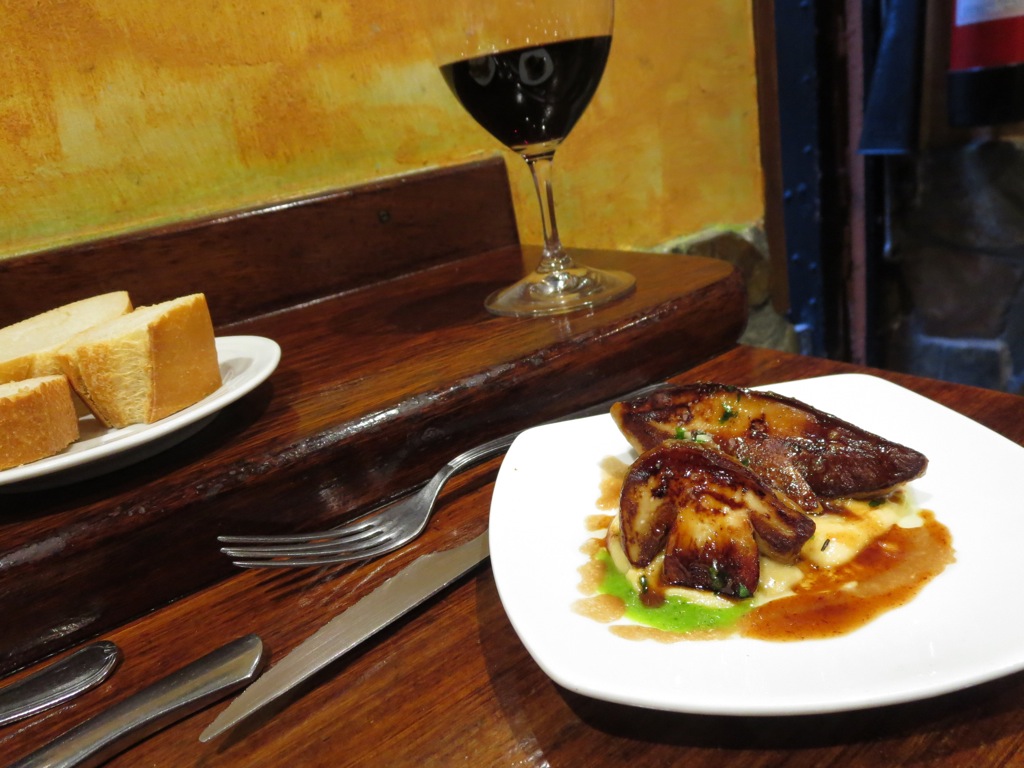
Taste Triumvirate: Our Top Three Pintxos
It may sound quite taxing to bring you this digest of pintxos in San Sebastian:
- Thirty-six hours
- Ten stops
- Twenty-five pintxos.
- Drinks? Quite a few. We lost count.
Taxing? Hardly. The time, the eating, the drinking? That was easy.
What was difficult? Narrowing the field to three dishes.
They must come in an order on the page, but please be sure that it was a tie. These are three lovely, lovely, lovely dishes from three different establishments. Each gives a full day supply of culinary ecstasy.
Mushrooms
Location: La Cuchara de San Telmo, Calle de 31 Augosto 28
Basics: two mushroom halves, seared. Served on a bed of hummus.
This dish showed the most expert cooking. Our hats are off to the two ladies who were making this smoke in an open kitchen. They seared mushrooms of two different sizes in a way that sealed all the surfaces, warmed both delights all the way through, and released just enough moisture to make each bite moist. Women of high skill for sure: they had control of the cooking surface, judgment, timing, and above all, experience.
Texture? Superb. The sear created a crisp brown layer on the outside (So flavorful, that!). A sharp steak knife accompanied the dish because these two boletes were meaty. Tender. You need only pull the knife toward you and the flesh parted, showing a moist surface for which your tongue yearns.
Have you ever turned the earth with a spade and sensed that delicious things sprout from this soil? Have you ever loved the aroma of bean spouts? What about the smoke that rises from the grill when you first put a steak to the steel? All those and more were wrapped up in each taste of these hongos.
Dip a slice in the hummus an you add some support of softened garlic and a rich olive oil. The beans add a lighter sense of earth to the mushroom flavor.
Isn’t this what a rich red wine was made for?
Pork
Location: Bar Borda Berri, Calle Fermin Cabeton 12
Basics: One pork rib. No mas.
We were wondering if the Basque cooks of San Sebastian might be able to one-up the other Spaniards when it came to the pig. We were not expecting their success to take the form of a barbecued rib.
We should be just a little careful about the word ‘barbecued.’ In terms of cooking, I suspect that this dish did use one of the classic tricks of pork rib cookery, where the meat is cooked primarily hot water before it sees fire. My working theory is that this meat was cooked sous-vide, coated with spices, and then torched just before serving.
Maybe you’ve experienced overdone ribs, where you pick up the bone and all the meat stays on the plate? Or an underdone rib, where flavor is underdeveloped and you have to wrench the meat off the bone? This rib was perfect: crispy on the outside and all hot, tender goodness underneath.
Part of what made this dish so blazingly good was the pork quality. The pig that makes a great ham also turns out a great rib: plenty of meat, just a thin layer of fat, and a sense that the pig used the rib to sigh with happiness for most of its life.
Another outstanding aspect of this rib was the coating of spices on the top. While I’ve used the word ‘barbecue,’ you need to dispel any images of a Carolina mustard sauce or Memphis molasses that leap to mind. This rib had a top coating that was more like an Indian garam masala than anything I’ve had on a rib in the US. Clove and cinnamon and black pepper were part of that mix, but only part. Hot pepper? Not a whiff.

One pork rib (the menu joked it was a “kebab”) with two sauces? Is that a puree of parsley and fruity olive oil? Is that a ‘simple’ applesauce? Enjoy!
The spice mixture had been loved by open flame: it had all the dark richness that comes from branding spices. The spice coating was crisped, as was the top layer of fat.
A smoky essence clung to the outer crust that wasn’t shared by meat on the other side of the bone.
It was one rib with a world of flavors and textures to explore.
Duck
Location: Txondorra, Calle de Fermín Calbetón, 7
Basics: A duck leg. Shoestring fries. Fruit sauce.
There’s a theory that says pintxos are eaten in two bites. Humbug.
Some, like this duck, invite you to take your time. Nibble a strand of flesh, have a fry. Repeat.
What if, instead of dipping your fries into a tomato ketchup or mayonnaise, you dipped them into an almost savory sauce cooked of apple and plumb and citrus? That would be delightful, would it not?
This duck relaxed on a sauce. And I do mean relaxed. Tender! A little twirl of the fork and a sliver was ready for the tip of your tongue.
Where duck meat typically has a darker color than chicken, this duck had been tinged toward red with sweet paprika. And in the face of the light-with-the-salt tradition of northern Spain, this bird was richly salted.
And a sublime touch! To add a few stripes of sweeter-than normal basalmic reduction to the duck. Think Hoisin meets Italy.

Duck leg and fries. And a piece of bread (Pintxos have to have bread, right?). Dig the newspaper underneath: the front-page story of the local news is a local restaurant family doing a multi-million euro deal to open a restaurant in Copenhagen.
Yours at the finish line,
Chris

Recent Comments